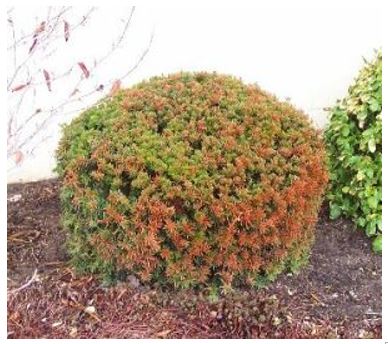What to Look For

The primary symptom of winter desiccation is the reddish discolouration of evergreen foliage above the winter snowline. Winter desiccation occurs when the parts of the tree above the snowline are exposed to warm, dry air and sunlight when the ground is still frozen. The needles begin to transpire moisture, but roots cannot replace this moisture, and needles turn brown as a result. Damage is more common on exotic species or open-grown trees than native, sheltered trees. Trees generally recover, but if the damage is extensive or occurs over several consecutive years, it can result in severe dieback or whole tree mortality.
Prevention & Treatment
The buds are not generally affected, and trees usually recover within a few years. Regularly watering the root zone area around the tree right up until the ground freezes in the fall is the best preventative action to take. Ensure the water infiltrates deeply into the soil and avoid light reflecting off surfaces. For example, rough up the snow around the south and south-west sides of the tree throughout the winter. This method reduces the sunlight being reflected on the tree.

